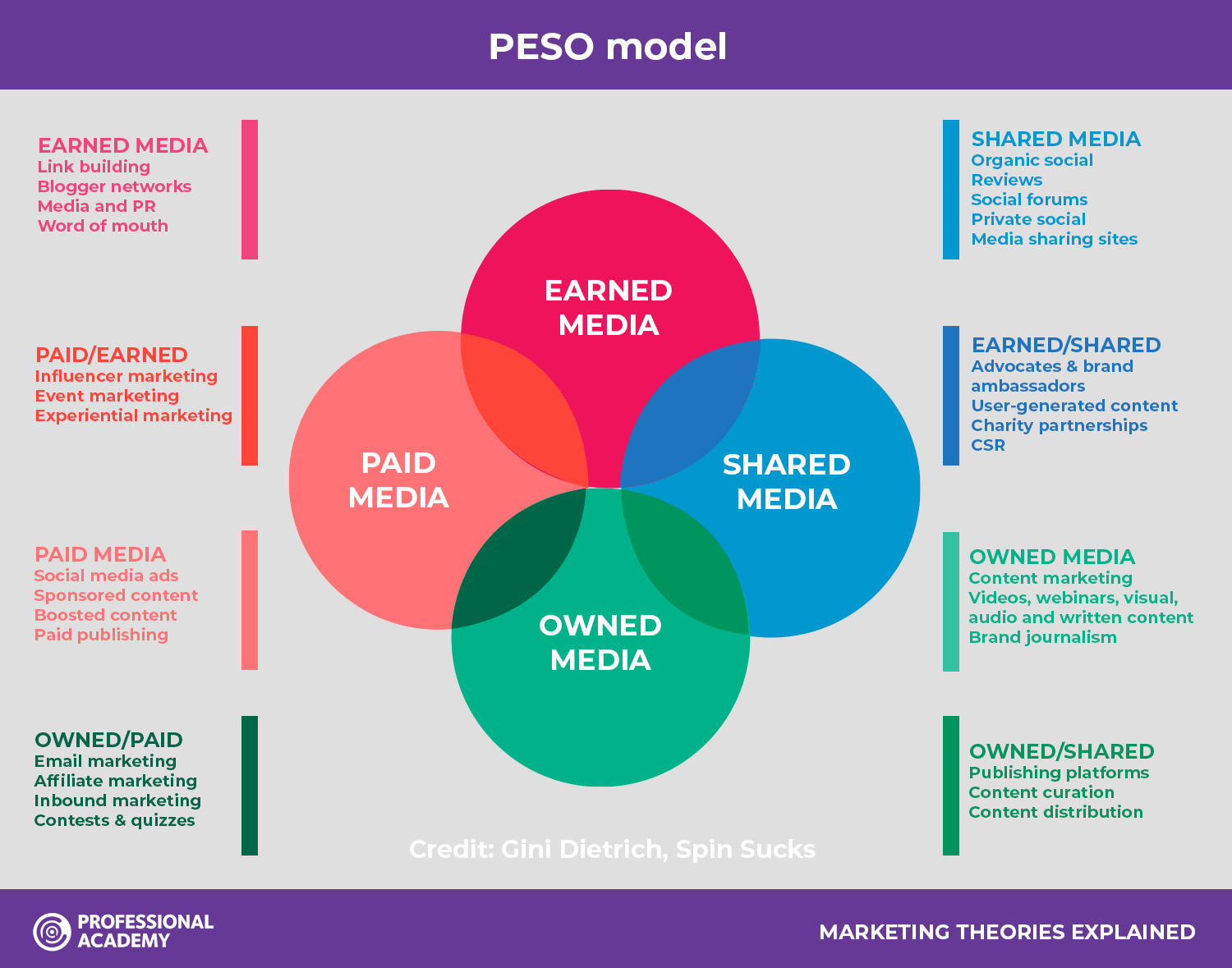



The PESO tool is a great way to categorise the types of communication a brand has with consumers. It allows marketers to take a step back and see the bigger picture when it comes to their marketing activity. You can see where efforts are being focused, and where they should be focused to create a seamlessly integrated mix.
PESO was created by Spin Sucks founder Gini Dietrich in 2009 to plan how organisations use different forms of modern media to distribute their content. Its roots are in the world of public relations, but it’s also an incredibly useful tool for marketers to plan their content and overall strategy.
Each marketing communication fits into one or more of the following four areas; Paid, Earned, Shared and Owned (PESO).

This refers to any content that is paid for. It covers print and TV advertising, social media ads, promoted posts and paid publishing.
It can be quite high cost but reaches new heights in terms of its speed (especially with digital advertising) and reach for your message. There are also many affordable paid advertising options within social media and you are able to set a budget to fit with your needs.
This marketing communication is what’s traditionally known as public relations (PR). It’s content that’s distributed through a third party in order to gain good publicity, reputation and visibility.
Developing relationships with bloggers, the media, investors and influencers can provide perfect opportunities to share content in the right way and in the right form. It’s also cost-effective and great for long-term authority scores.
Shared content is defined by social media posts/engagement, user-generated content, reviews, networking and CSR (corporate social responsibility). It’s a two-way communication channel that provides some form of benefit to both parties.
You might think social media should come under owned, and the assets do, but as another platform hosts and part-owns your social media feeds, it’s considered more of a shared area.
This may sit in last place in the model but it’s actually the area you should look at first! Owned media is a good starting point as it refers to any content your organisation already owns. So, digitally this is things like blogs, podcasts, your website and social media assets. Traditionally it would refer to physically owned property such as stores.
Owned media are crucial as they form many of the components of paid, shared and earned channels. For example, if you are creating a social media ad (paid media), the copy and imagery in that ad is the owned media.
You have complete control of this content as it’s created by your brand. And it’s a cheap or even free tool that can be used alongside an effective content strategy to build a great library of relevant content.
Applying the model takes marketers out of their comfort zone and allows them to consider other areas they might not have previously thought about.
Professional Academy's Marketing Theories Explained is a video series that explains marketing models in more detail.
Watch the recording for the Communications Mix to see CIM tutor, Professional Academy trainer and all-round marketing pro Peter Sumpton talk about the importance of integrating and organising your communications using the PESO tool.
Many other important marketing theories are taught in our CIM Marketing Courses.
For more information on Professional Academy’s Marketing and Digital Marketing Qualifications please download a Prospectus today.
If you would like help referencing this blog, check out our Harvard Referencing Blog.